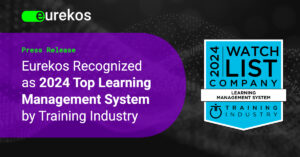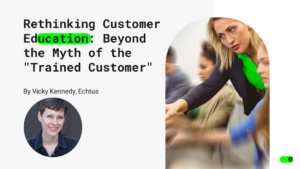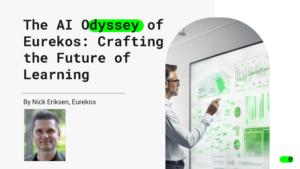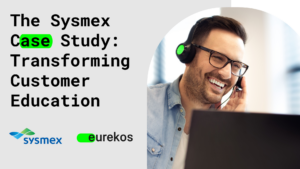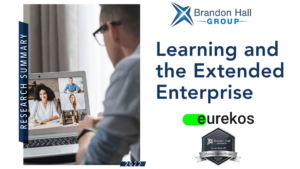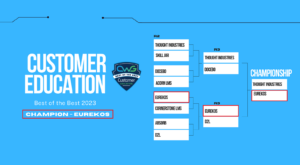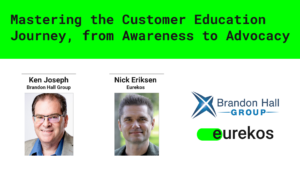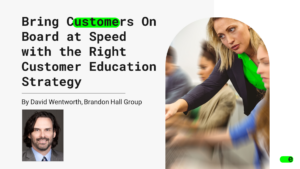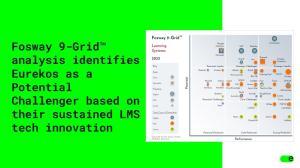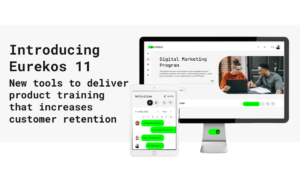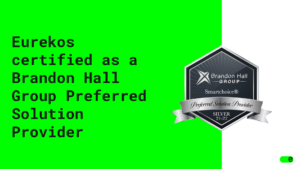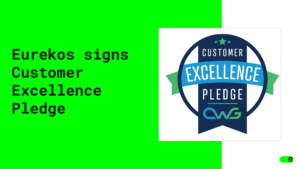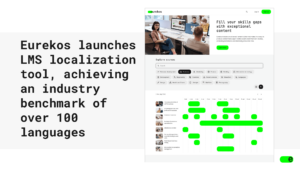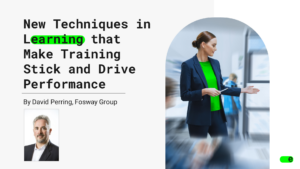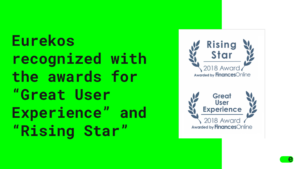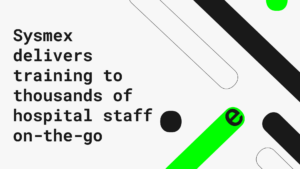By Nick Eriksen, Eurekos Systems.
Virtually every organization in the world has some sort of employee training program. Whether it’s leadership training, compliance, onboarding, personal development, or a combination, organizations understand the immense importance of keeping their employees up to date with relevant skills.
But what many companies lack is a way to train customers, partners, and franchises – sometimes known as the extended enterprise. The use case is different here – while your employees are a captive audience, looking to complete their training program or improve their skills, your customers and partners are more elusive and harder to train. While the business benefits of customer training are vast, you need a smart strategy to target, attract, and engage your external audience.
Highly simplified, there are three key differences between training employees, and training partners and customers:
- The learning content – your partners and customers will have very different learning requirements to your employees. Customers want to understand, and most importantly, get value from your products and services, while partners need to promote, sell, and support your products.
- The delivery method – your external audience won’t have an internal company email address to access or push your training to, and you will have to support multiple ways to sign-up, as well as interoperability options with customer portals, CRM systems, partner login systems, and more. This also makes it a cross-functional team effort for your organization.
- The measurement approach – while your learning management system (LMS) can offer some valuable information about your customer education program, you will likely be looking at different metrics for extended enterprise training – for instance, revenue, churn rates, speed to proficiency/product adoption, and net promoter score (NPS)
How customer and partner training impacts top-line company performance
Customer and partner training is any organization’s secret weapon. It can be a powerful tool for increasing customer retention, boosting spend through cross-selling and upselling opportunities and more loyal, successful customers.
For instance, your customer training program is usually focused on product training. Customers can learn to make the most of your existing products, while also being exposed to other products that they may not yet use – perhaps other software offerings, or accessories for their already-owned products. This will help increase interest in other products, and help you retain customers who are getting maximum value from your products.
Best practices for measuring customer and partner training
The ROI equation
The three major parts of measuring the ROI of customer training are product adoption, renewals, and profit.
Product adoption, because a successful customer training program will lead to more customers using more of your products, through new sales and cross-selling.
Renewals, because better-trained customers are more likely to remain loyal to your products.
And profit, because keeping existing customers is at least five times cheaper than finding new ones, and better-trained customers means lower help desk costs and higher profit margins.
Customer education is key to scaling the business. That scale doesn’t happen without achieving customer success, which requires customer education, technical, and functional support.
What to measure
This is the million-dollar question. Just because you have a training program for customers and partners, that doesn’t mean it will be successful. And how will you even know if you don’t know what to measure?
Defining your business goals is the first step. This could include product adoption, scaling customer support, customer success, customer satisfaction, and more. These goals will allow you to ask the questions that will identify what to measure.
Looking at products and services, transactional Net Promoter Score (NPS) is ideal to get a more granular understanding of your customer training exchanges. While NPS looks at the entire relationship between you and your customers (or partners), Transactional NPS looks at specific points of contact. For instance, once a customer has completed a learning program in your LMS, it’s a great time to reach out to find out about their experiences.
If you charge customers for your training, this opens up a whole new set of metrics to measure. For instance, overall sales and average order value provide you with useful insights into your customer behavior and learning activity. In the early stages of your customer training program, customer lifetime value (CLV) is more important than profitability, according to Adam Avramescu in his book Customer Education. Customer education will likely be a cost center for a while, but the ROI benefit here is to create a better-informed, more loyal customer base. Whether you remain a cost center depends on your business strategy, the products and services, and the wider industry.
How to measure
Comparing churned, renewed, and expanded customers who did or didn’t access training is the easiest and most direct way to measure the impact of your program. If your program is working well, you should see that customers who are engaging with your training don’t churn as much, are more likely to renew, and more likely to purchase more than those who don’t.
Of course, NPS and Transactional NPS surveys will play a vital role when you’re measuring the success of your customer and partner training programs. Do they find the training useful? Was it worth the cost? Would they recommend it to someone else?
But it’s not all about NPS. Customer reviews and customer satisfaction surveys are also hugely valuable for measuring success. While a star rating or a simple “like” is always nice, you should also take a closer look at the qualitative data. Extract as much information as possible, and ensure your learning team knows what’s resonating and what needs to improve.
Many learning management systems will enable you to collect this data, but you will get the best overall picture if you connect your LMS with your CRM and correlate with other sources of data. In fact, this is crucial, as efforts are very likely to require cross-functional efforts, and the data from these will likely reside in other systems.
This will enable your training team and your customer team to see who is engaging with your learning, what results they’re getting, and what revenue it’s bringing in, helping you identify more learning opportunities, where content is not achieving the desired outcome, new training, and new courses.
Technology required
Your customers are more plentiful and diverse than your employees, which means you need a different tech approach. Scalability is the key, from content to distribution over infrastructure, and security requirements.
Put simply, you need an LMS designed a) for external, extended enterprise training, and b) for measuring the impact of that training. But most learning platforms are designed for employee training, so choosing the right LMS is vital to maximize the value of your program.
A totally different type of engagement is expected from a LMS for extended enterprise to scale personalization and localize content for each audience, to facilitate and automate suggestions, adaptive options for experienced and new clients, gather feedback and correlate data across multiple systems over time as your customer education gains traction and maturity.
Ideally, you need options for interoperability. You will need integrations enabling your LMS to speak to your CRM and sales platforms, such as Salesforce, and potentially BI tools or other external analytics options for analyzing big data. In other words, you’ll need a mature API and standard business connectors, LRS (Learning Record Store), and so on. The list is very individual to each organization. After all, your business is unique, and your KPIs are too.
Getting it right
There is ample opportunity to measure the direct top-line and bottom-line impact of your customer and partner training, but it requires planning, and a technical setup focused on extended enterprise to ensure it is even possible to collect the right metrics, and to communicate with other relevant systems in your technology stack.
This is why you need to consider not just “the system,” but that you have a LMS partner who can work with you directly, and not pin you between several vendors who support business connectors and another who delivers the system itself. This is one of the major reasons many do not stay with their LMS vendor – but working directly with your LMS partner to create a great customer training program could be the reason you stay with yours.




